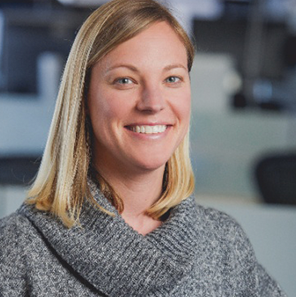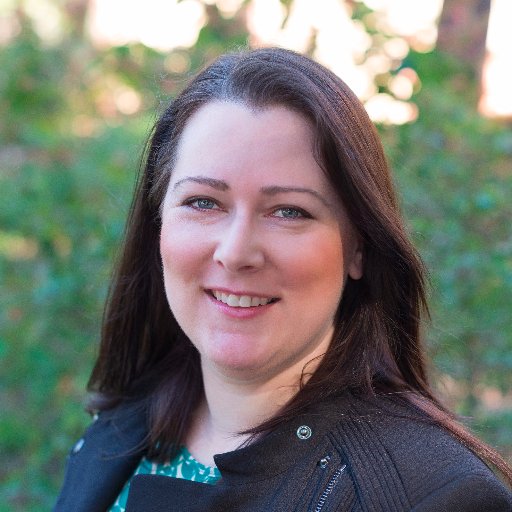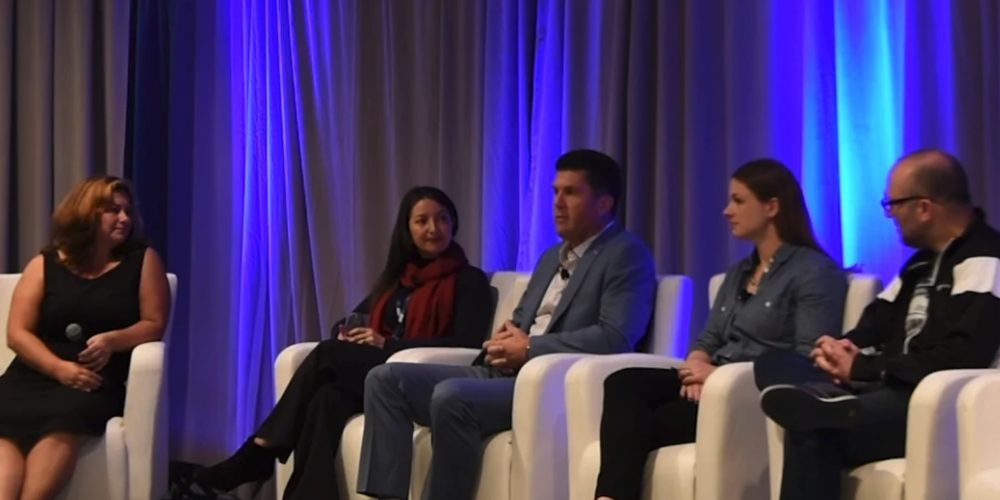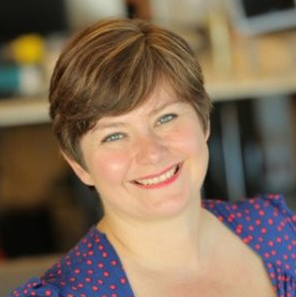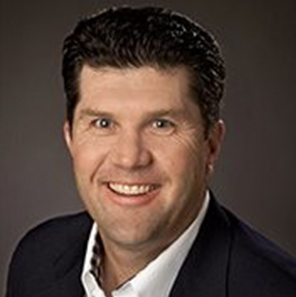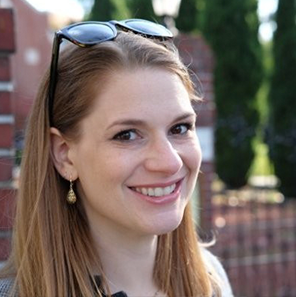Building a Streamlined Onboarding Program
2.9K Views | 51 Min Read
Roz Greenfield: Thank you. Welcome, everybody. So, who’s been here all day so far? Who sat through session after session all day and then ate lunch and is feeling a little tired right now? Who thinks your new hires feel this way on day three of onboarding? Okay, so I’m really excited that we’re here today to talk about building a streamlined onboarding program because arguably this is one of the most important initiatives that a sales enablement team has. And why is that? Because sales leaders have these tremendous revenue numbers and targets that they need to hit and they know that the way to hit that is to hire the best salespeople in the world, and we all do that. And then we have to get them productive as quickly as possible because if we don’t, we have a really big hole in that number that we have to hit. And so they realize that it’s really important to build a streamlined onboarding program.
Who here, when they first started on their first job when they went to a company, onboarding was one week, boot camp, death by PowerPoint? And then they were like, “Go sell. Hit quota.” Yeah? Okay. We’ve all learned that doesn’t work, that’s why you’re all sitting here, right? And the reason that doesn’t work is because there’s – especially in this fast technology world – a lot that our salespeople need to be able to do to be productive. And so we want to be able to look at onboarding as a complete ramp program. I’m really excited that today we’re going to hear from this wonderful panel of practitioners who have built and continue to maintain and streamline really productive onboarding programs. And we have a very nice array of different organizations represented here.
Before we introduce the rest of the panel, I’m really curious, who here is in sales enablement? Awesome, love that. Who here is in sales or sales leadership? Okay. Thank you for coming! That’s a really, really interesting sign to me, that we have only two sales leaders here and all of us trying to get our sales leaders to kind of play with us in enablement. So we’re going to talk a little bit about that later on, and I commend you guys for being here. Who here thinks onboarding is one of the most initiatives for enablement? Yeah. A lot of companies are growing rapidly, a lot of people you’re hiring at a very rapid rate, and you really have to make sure you get the right people in place and being as productive as quickly as possible. So let’s talk about that. I’m going to ask each of you to introduce yourselves, and as you introduce yourself – it’s after lunch, we want to pick up the energy a little bit – if you could maybe share your funniest onboarding experience story. So, your name, your company, and your funniest onboarding experience story. Starting with you.
Julie Newhouse: Alright, I can start. Hi everybody, I’m Julie Newhouse. I head up training and enablement at Lyft, specifically on Lyft Business, which is the B2B arm of the company. So we manage salespeople, account managers, program specialists, a whole array of folks that roll up into that team. I’ve been doing sales enablement training in the Bay Area for about the last 10 years or so. I’ve seen a lot of things change and I’m excited to be here today, chatting with all of you. My most funny and slightly embarrassing onboarding story – I used to work at Pandora, and for our first day of onboarding we would bring in all of the execs, up to our CEO, for an intro and a welcome. And my first time running it, I got up, I had everything ready. I had gotten all of the materials, everyone’s coffees and waters were on this table, and when I was getting ready to kick off the day, I leaned back on the table – didn’t realize it was on wheels – it went flying back, I went flying back, all the coffee spilled. And it was pretty mortifying.
RG: And everybody was all invigorated and ready to learn –
JN: Yeah.
RG: So that worked out. Thank you.
Gina Krigbaum: Hi. My name is Gina Krigbaum, and I am the head of sales enablement for Talend. Talend is in the data space, particularly the cloud. Our company helps organizations move, transform, and clean their data so that they can make business decisions. My team and I are responsible for managing the enablement for sales roles from SDRs, BDRs, all the way up to senior AEs and sales managers. And my funniest story from an onboarding – so, our company is about 10 years old and was a startup in France, that’s where we began. So we run a lot of our onboardings in France. And we always go out to dinner, somewhere really amazing usually, while we’re in France. And we walked down to a restaurant that was a boat, actually, on the river. And it was amazing, we had a great dinner, the food’s great, the wine’s great. Then somehow we get separated from the group walking back and the only people in my group were not local and we basically got lost in France and did a little bit of a walking journey back to our hotel. But it was fun, after a few drinks it was fun.
Kate Gadzinski: I’m Kate Gadzinski. I lead sales enablement and training at Dataminr. And currently I cover both commercial and public sector of our sales fields, and that includes SDRs, account executives, and our client engagement managers, so that kind of customer success arm. So there’s a lot in one place, and so we’re just trying to get ahead of everything right now. And my funny story is that I recently went to a Warner Brothers’ tour and I decided to pay $40 to take a video of me on a broomstick in front of a green screen. And so all of the new hires somehow, because of my lovely coworkers, saw my Harry Potter green screen experience before I even got to introduce myself to them. So, it was a little embarrassing but to be honest I was still really proud of it.
RG: I would too!
Jim Ninivaggi: Hi everybody. I’m Jim Ninivaggi, and I am the chief readiness officer for Brainshark. We’re a sales readiness platform. We help companies create readiness content delivered to their salespeople and assess to make sure that the reps are really ready. And onboarding is probably the most common use case, companies come to work with us. Prior to Brainshark, I was an analyst at SiriusDecisions – I don’t know how many of you were here to see Peter Ostrow – but I actually launched that practice so I’ve had the opportunity to talk to a lot of enablement leaders about onboarding.
So my story – this goes back about 25 years. Earlier in my career, I had the opportunity to work with Xerox learning systems, the sales training division of Xerox – Xerox sales training. And we went to headquarters for our onboarding – we were onboarded for three months so this was day one. I meet my sales VP, my regional sales VP – I’m like, “Hey Dick. Great to see you, Dick. I’m really looking forward to a great year Dick. We’re going to get off to a great start, Dick.” And one of my colleagues goes, “You know his name is Gene, right?” It was our national VP who was Dick, this was Gene. So that was like, of all the names I had to be calling this guy.
RG: So much for a good first impression.
JN: Yeah. Yes, it was a slow start, let’s put it that way. I really had to prove myself to Gene.
RG: But I think it worked out for you.
JN: It worked out, yes. He fired me three weeks – no, no he did not.
RG: Well, thank you all. So, let’s start by defining what an enablement program might look like at some of your organizations. Maybe Julie, we’ll start with you. Can you describe what the onboarding program looks like at Lyft?
JN: Sure. So the new hires on our team first go through the basic HR onboarding which is roughly a day and a half, and then they’re turned over to us. So we kick off our onboarding mid-week. And for now it’s roughly a three-week program where we’re really managing them, we sort of own them for that initial time before we let them really dive into their job. And, the way we’re approaching it is all about practice and immersion. So we take one or two learning objectives each day, practice, a little bit of either classroom training or whatever material they need to do as a self-study. And the rest of the day they spend practicing those concepts. So that could be anything from mastering the one-minute elevator pitch all the way up to how are we leading a call using the sales tools that we have. Really, every part of the sales process from A to Z is incorporated somewhere within that three-week span.
RG: And after three weeks they go back to their managers?
JN: Yes. They do go back to their managers. And we’re working on doing a better job of having these ongoing in-touch points so that they’re not left to their own devices after that three weeks. But right now we’re checking in at month three and then again at month six.
RG: Yeah, that’s really important, right? Because sometimes we think, “Oh, they’re onboarded, they’re out of the program.” And then a year later they’re like, “Well, I wasn’t trained right.” And it’s a matter of when am I actually really presenting pricing, when am I actually really doing the legal stuff? Let’s reinforce it as it comes up. Let’s hear from one other – Kate, maybe you can describe what it looks like in your organization. Because I’m sure with this room full of people, we have a lot of different sizes and types of companies in the room.
KG: Yeah. And we didn’t have any onboarding even at the beginning of 2018, so ours is relatively new and I kind of spearhead it on my own. So we’re a little bit, I think, on the earlier end. But right now we have a similar section with HR in the first couple of days – they take two days, and then they’re handed over to me where I do kind of cover our entire sales process. They meet all of the sales leads in person. They get intros to the tools, and then throughout that week and the next, we start to get them familiar with the Dataminr language and our glossary, all of our internal tools and our sales tools. And then we do fun games, like I make them do Jeopardy with our rules of the road and then we have them do practice role-playing pitches with each other. And then after that, they start to do more role-based. I think one of the big themes that I have is consistency where possible and difference where necessary. So, that’s huge for me, is driving consistency because previously we didn’t have a consistent process or any sort of major theme across all of our teams. Then, allowing them to dig into that difference when they need to in order to go out into the world.
RG: Yeah. So what I really like about what you described is that it’s kind of like a layered approach, to start with the foundation, get a little deeper, get some real-life experience in there and shadowing and then getting them out into the real world because it’s a much more complex world that we live in today. So before we go much further, we talk about onboarding and ramp and it used to be a week, now a lot of companies are talking about 90 days and you even mentioned six months and nine months and even a year check-in. When we say someone is onboarded, what does that even mean? How do you know that they’re onboarded? How does the organization know that it’s onboarded? So Gina, maybe I’ll turn to you on that one.
GK: Yeah, so just as a quick overview, our onboarding focuses a lot on pre-work that we have people do prior to coming in in-person, and a reason for doing that is really we found that the week we have with them – which is generous, I think, by a lot of standards – isn’t enough time to cover everything that they need to know. So we’ve put a lot of energy in the last year into putting content online and we’ve been very strict, with the help of our sales leadership, about having people do that pre-work in advance of being there live in the room. And when we’re in the room, our live onboarding is focused entirely on being experiential. It’s case study based, and actually follows the flow of a sales cycle from start to finish. And people are role-playing each part of the sales cycle as they go through. The reason why I mention this is that how we know that they’re done I think is something that we’ve struggled with.
So they go through this experiential part and we can measure them as they do role-playing, we can give them feedback, we can see how they are, we can point back to the managers and say, “Hey, this person was struggling in this place” and we do that. It’s not entirely scalable, which I think is something we’re struggling with. And tracking on the job learning is also something we’re struggling with. So, how do we know they’re done? Right now I think it’s just having them go through it, and making sure we have that feedback circle with their manager so that that person can keep coaching them. We also track, obviously, lagging metrics such as quota attainment over time and so on. But it’s an ongoing challenge, I would say, for us.
RG: So, I have a follow-up question for you. You mentioned that you give them pre-work before they come to your boot camp. So if I start day one – how many days or weeks later is that boot camp happening?
GK: Of course, the sales team wants people to go through the live onboarding as soon as they possibly can, so someone gets hired three days before and they really want that person to go through. So that’s been a struggle for us because we really think that to go through all the pre-work that’s involved in our program and come in with the level of knowledge that you need to make the best use of that time, you really need about two weeks. One week minimum, if that’s all you’re focused on.
RG: Yeah.
GK: That’s been a struggle for the sales leaders because they don’t want to hear that, they just want people to go through it. And I know in our company we’ve also struggled with a changing profile in who we’re hiring. We used to hire quite a bit of people who would come in with industry knowledge, and that’s changed with the tightening labor market. So for us, it’s even more made it a necessity for these people to have that background industry information and product information. And so it’s been a bit of a struggle but we push pretty hard to hold people to not making their day one their first day live.
RG: I actually think that’s a really good practice. I’ve gone back and forth, I’ve struggled with this a lot and dealt with the same issues you were dealing with. And we’ll talk a little bit about the sales managers soon. But I think when you start day one – and sometimes it has to happen that way – but it’s like a firehose coming at you, whereas if you’re able to come in day two or week two, you have a sense of what you’re really dealing with, you’re technology is all set up already, and you can really learn from it. Jim, I’d love for you to talk to us a little bit about what are some of the key components of a good onboarding program?
JN: So, the way that we run onboarding at Brainshark is slightly different than I think most companies do. Previously, we had the traditional 30, 60, 90, 120-day program, and putting our reps through a good onboarding program. But we know the rallying cry for the CSO is, “We’ve got to get the reps productive faster.” Right? So it kind of dawned on me that, well, if we want to get reps productive faster we should be focusing on the activities that lead to productivity. So what we’ve done is we’ve actually designed and implemented an agile approach to onboarding. So, what I did is I sat down with our CSO and I said, “When do you expect a new hire to be able to do their first prospecting call?” That’s day 14. “When do you expect them to be able to do a first discovery call?” Well, that’s day 28. And so on and so forth. So we isolated the key activities that lead to revenue and we’ve created sprints against those to meet those deadlines that our sales leader had set out for us.
If you’re a new hire at Brainshark, in addition to the HR stuff and learning how to use our CRM and learning how to use our expense report, we’re doing a sprint with you. So in your first 13 days, we’re getting you ready to make that first prospecting call. And we take an assessment-centric approach – we’re lucky that we have a tool that helps us with that. So you’re constantly being assessed through video, submitting a video of yourself, managing an objection. We do live role-playing. And you’re also being certified as you get on your first calls. But, what we’re doing is really focusing on, “how can I accelerate time to first activity?” We’re measured on that. And then hopefully that’s going to lead and has led to increased productivity.
RG: So do you find that with your onboarding program they’re actually doing their real job?
JN: Yes.
RG: So, they’re able to be productive and also be learning at the same time.
JN: Yeah. It creates a certain level of angst because you want to meet those targets. We say, “Look, we want you up and running and making that first call by day 14.” So it creates a little level of urgency for that rep to say, “Okay, I’ve got to learn this.” And so, the good ones will go out and they’ll get additional coaching, they’ll ask for additional practice. And that can tell you a lot about a new hire. There’s that old saying that you want to hire slow and fire fast – so sometimes you can tell if somebody’s really not sticking to the program and making that effort to go out there and find that coaching, and maybe they’re not a fit.
RG: And how long does that program go on for?
JN: Right now, it goes for about three months.
RG: Three months.
JN: Yeah, because we’re trying to match it up. They may not need negotiation skills until day 60. So we’re trying to track it to when they’ll need that skill, and not introducing a competency that they’re not going to use right away.
RG: Yeah. Especially adult learners. It has to make sense to them – why do I actually need it? So if you’re teaching me something that I’m not going to need for another six months, if you’re in enterprise sales it might be six months.
JN: Exactly.
RG: Then teach it to me when I need it. I’m going to allow anyone on the panel to answer this question. But one of the things, as you’re speaking Jim, that I’m thinking about is one of the struggles that I think a lot of organizations have is everybody understands that there’s going to be a boot camp and I’m going to learn for a week. But then all of a sudden the rep says, “I’ve been hired to close deals. I haven’t been hired to learn. I haven’t been hired to go through onboarding.” Right? But then seven months down the road they don’t know how to do negotiations, right?
JN: Right, that’s right.
RG: So how do you balance that within your programs with supporting the reps that just want to hit the ground running, and frankly the sales managers want them to hit the ground running, and they don’t get that ability and that time to learn and then practice and do it right. So I’ll let whoever feels most passionate about that.
KG: I have an example.
RG: Yeah.
KG: We have checks and certifications in place, and one of those things we call – for lack of a better term – a murder board. I don’t know if you guys use them in your companies as well. But the managers are in charge of having their AEs do a murder board in front of them and their entire team. So they have to demo in front of the entire team, and they’re only ever allowed to get in front of a customer or a client once they feel comfortable and confident speaking about our platform and value prop. And that ensures that all the way up to that murder board, they’re really making sure that they’re getting to know the product and they’re getting to know our value prop above that product so they can speak really competently and confidently to the product and handle any crazy objections or something that they might have.
RG: Yeah. So they have something that they’re working toward, which is really smart for a sales rep, because sales reps are goal-oriented people, right? So if they can work towards something that might really help them.
JN: Yeah. I was going to say, because it’s counterintuitive to say, “Okay, I get out there to start selling, I’ll become productive faster but if I’m not competent I’m going to embarrass the company, ruin the brand, and lose deals.” So, again I don’t want this to be a plug for Brainshark, but we can track at any time where a new hire class is and where a new rep is along their certification path. So if you set up those certifications, I know whether or not you’re ready to do your first demo, because at Brainshark every new salesperson has to do a 20-minute demo in front of our CEO. It’s a little nerve-wracking. Our CEO can be a little tough. But if you haven’t passed that certification, you can’t do a demo in front of a buyer. So by setting up that certification program and those certification gates, it prevents us from unleashing a salesperson who isn’t ready to sell.
RG: Yeah, and I think that’s so important, and I love that you do it with your CEO. The thing that I always think about is – and one of my old colleagues is sitting in the room, Katie from Optimize, and we used to talk about this a lot – are they good enough for a new hire or are they good enough to be in front of a customer or in front of a CEO? That has to be the barometer because the CEO or the customer that you’re selling to is not going to say, “Oh you’re good enough because you’re new.” It’s like, “you’re solving my business problem, I understand the value that you’re bringing.” So that really has to be the barometer. And that’s hard, right? It’s hard to be able to do that. And there’s not a magic number or a magic day, but you know that they’re done when they pass your CEO or they can pass the customer who says, “Yes, I can see the value.”
So we talked a little bit about the managers, and I think why in onboarding it’s such an important initiative for all of us like we started this discussion off with, is because they have to hit their sales numbers. So, we really are supporting the sales manager and the sales leader in being able to hit their number. So I’m really curious how you – and we’ll start with you, Julie – how do you involve the sales leadership, the front-line sales managers, in the onboarding program? Because we are talking about a ramp period and needing their partnership throughout it, so what are some of your thoughts on that?
JN: It’s definitely an area where I can’t stress enough the importance of being on the same page with the sales managers, and I really work to develop ongoing relationships with them, and then put some of the ownership of program back to them. I’ve definitely made the mistake in the past of either running a training or a program or pushing something out to the team where I hadn’t worked with them first, and it just kind of falls flat. I really need them to help be the vehicle to either drive that change management piece, drive a new behavior, or whatever it might be. So, during onboarding, in the first one, two, and three weeks, the reps do have a checkpoint where they do either a live product demo, or some type of interactive piece, and it’s usually with myself, one of the reps that’s more of their mentor, and then the manager. So they’re either watching or being that engaged party. I also try at the beginning of every new hire class to do a better job of really communicating to the managers, “this is what’s happening, this is the schedule, here’s where we need you”, and sending out reminders to say, “Okay, I need a call shadow opportunity that is a first call or is a call with an account manager.” And really having them be along the process with me and checking in at these points where I really need their help and they need mine to make sure that we’re both meeting these goals.
RG: Yeah, excellent. What about you, Gina?
GK: So, for us over the last year we’ve actually come a long way in having our senior sales leadership be a part of our onboarding program. So in every live onboarding, we have either our global head of sales or the head of EMEA or wherever we happen to be located that onboarding. There are several touch points throughout the week that they’re there for. They typically do a welcome and then they also deliver our corporate pitch in their own voice, in the way that they would do it, so the people can hear it. And then finally, and probably most importantly, they come in on the last day when people, in groups, are delivering pitch presentations and give really candid – but super helpful, I’ve been told – feedback to the people who are delivering these pitches. Everything from like, “Hey, I’ve seen how this kind of pitch goes and I would maybe tweak it like this” to just more presentation-type feedback. So it runs the gambit and we’ve found that to be very helpful.
I think where we’ve struggled is in engaging, to your point, with the broader sales managers so every person who’s in that training has a sales manager that needs to continue to onboard them. So we’re working to get better at that. But I will say one thing that’s interesting to me about being in sales enablement is that one of the byproducts is you start to study where your company is in their growth and development. When I started at Talend, I don’t think there was a lot of hunger for that level of, “give me a checklist for how to check in with my person every week for their first 12 weeks.” But now there is, and so now that there’s that hunger for it, and we’re not cramming it down their throats it’s a lot easier to say, “here’s a guidebook for how to onboard a person in a really clear and detailed way.”
RG: I love how involved you have your sales leaders. They’re the ones who are going to be talking to them day in, day out for the rest of their employment with you. And I’m sitting here thinking: sales onboarding programs tend to evolve, right? So we do one and we learn from it, because how many people here do an onboarding once a month? Once a quarter? And then, just sort of sporadically ad hoc, right? So you guys are doing it pretty often and you’re evolving it as you’re going along, and does the sales manager know what’s been evolved? Or are they supporting the onboarding program that you had six months ago, right? And you might have changed something drastically. So I think we have to do a better job as enablement to keep them as part of this process.
Curious, because most of the people in the room are enablement. Do you guys have good relationships with your sales management? And that they’re on board with what you’re doing? Yeah? Yeah. Okay good. A few. Alright, and can we all take that on, maybe, as we leave this room and go back? And maybe even talk about what you learned here today with the sales leaders, and bring them a part, because ultimately, you’re helping them be more successful, right? It’s their quota that we need to hit. So we talked about evolving, and part of the reason why we evolve onboarding programs is because companies grow and we scale and we add offices and we add people. I know Lyft has gone through a tremendous amount of growth in the past few years. Can you talk to us a little bit about how you’ve scaled your onboarding program and how you keep up with that growth as you have multiple offices? And then we’ll hear maybe from Jim, as well, on that.
JN: I mean, it’s been a constant evolution. I think the hardest thing for me is that I had this dream of being able to roll out this fully buttoned up onboarding program that was up to date and I had really great facilitators and all the pieces came together. And I had to come to terms that that was just never going to happen and we have to be good at 70% accuracy and sort of keep growing and evolving. A couple of things that I’ve found work really well is that I lean heavily on a few subject matter experts. So I’ve worked with some of the reps or senior AEs that said, “I want to take on a project or more responsibility.” And I said, “great, you get to own this product content. Help me keep it up to date. Help make sure everyone on the floor is up to date with these changes.” And so now I have this sort of network of certified trainings that can help either facilitate or work on these content updates. So that’s been a big win for me since I am a really small team. I only have one person helping me with sales enablement.
The other piece, too, is also – back to the manager question – that I hold a monthly catch-all meeting with the sales leaders and I bring in the right folks to say, “okay, make sure you guys know about these updates and these changes that are happening.” Be it product, be it to comp, be it reporting, because we always have emails and Slack and all these channels. But we get everybody in a room and we face-to-face beat these updates into everyone’s heads so they can help expand those messages beyond what we’ve been trying to do in keeping it up to date on the wiki or wherever it lives.
RG: What about Jim? What about Brainshark?
JN: Sure. So, one of the big challenges in onboarding for a lot of companies is getting the managers to coach. Right? Anybody have a problem with their managers coaching? Yeah, and I’ve been hearing that for, you know, probably 25 years. How do we get our managers to coach more? And we do expect our managers to coach. But if you’re a first-line manager and you’ve got 10 direct reports and two of them are fairly new, that’s 20% of your team that you’re going to be doing a lot of coaching with. And what we’re finding especially – I think the reason we don’t see a lot of salespeople here is because it is the end of quarter.
RG: That’s a good point.
JN: At the end of the quarter, managers forget coaching and it’s just about closing the deals, right? So what we’ve done is take a different approach. We’ve actually got an embedded coach. So we’ve hired somebody and that’s all she does. She works directly, typically with our new hires, and five days a week she’s out there with our reps observing them, listening in on their calls, doing some video roleplaying with them to make sure that they’re ready. So I think that having that embedded has, from an evolution perspective, just taken our onboarding program to the next level.
RG: Yeah. I think for me, this is something that I hit my head against the wall for a long time to try to figure out, how do you make this work with evolving and keeping the manager involved? I was a sales rep, I was a sales manager. Many of us came up through sales. And I learned the more you can involve them, not only in the delivery but in the build of the program, and the more they understand what it is that you’re doing, the more they start appreciating it and the more they start supporting it. So anything you can do – a shared OKR on onboarding – it just changed the world for me when I was doing that. So, we’ll hold everybody’s last thoughts, but we have a room full of people who are here and have a very big initiative of onboarding, so I want to open it up to some questions within the room. We have a microphone coming around the room so if you have some questions for anybody on the panel – let’s open that up for a few minutes.
Audience 1: Hi. Thank you, by the way. Everything was really helpful, I’m trying to narrow down which questions I want to ask actually.
RG: You can talk to us after, too.
Audience 1: Yeah, I probably will. I think the main thing I’m curious about is from the scalability side. A couple of you mentioned you’re running three-week programs. So, how do you align with your recruiting and your HR teams to align that with the actually hire dates? And do you have any challenges with that?
RG: That’s a good question.
GK: Well, I can answer it from my perspective. It’s challenging. From an HR onboarding to sales onboarding transition, we tried aligning and it wasn’t working so we just de-coupled them. On the hiring side, to try to batch people we’ve also struggled with it. But luckily we have enough volume that regardless, we usually have enough for a class once a month, so we’re able to plan that way. So, not a lot of good help from here, it’s hard.
RG: But I think the way you do it might work because it’s not day one. It doesn’t have to be day one. So they can start – and maybe that’s the answer, I don’t know. They can start and then join the class whenever the next class is going. That might actually be the way to do it. Because this is a challenge. And I think the key then is how are we keeping this new hire busy, and we don’t want to just be keeping them busy, but keeping them productive and learning something so that A) we’re not just paying somebody who’s not doing anything and B) that they’re not feeling frustrated, right? A sales rep, especially a good sales rep, they want to produce. They’re goal-oriented, they want to hit their number, they sold you on how great they are when you interviewed them, and they want to show it to you as quickly as possible. And then they’re sitting around waiting. So it’s a matter of keeping them busy at that time, but if you maybe do it once a month, and it’s the 15th of the month, and if you join on the 1st or if you join on the 13th you’re going to join the class. Maybe that makes it a little easier. I don’t know if that helps you.
JN: Yeah, that’s actually what we do is we do it twice a month. So basically every other week we offer the sales onboarding program. So if somebody starts on an off week then we basically give them a self-paced packet for that interim week that we’re not doing a lot with them. So it’ll have certain people to have one-on-ones and coffees with, and some self-research, and some things that they can do on their own time that they still feel like they’re having a full, busy schedule.
RG: And by the way, that’s incredibly important. Is anybody here from field organizations or remote offices? Right. That’s really important, is getting to know the people that you’re going to be working with. I remember when I first was working at Oracle and I was getting to know the organization, I had a really hard time getting my big deals through the deals desk. But then when I got to know the people at the deals desk, my deals went through a lot faster, right? So there’s something I think that has to be looked at as part of onboarding. It’s not just the classes that we provide, it’s the experience that we provide. And am I getting to know the key people within the organization? And maybe that’s what you’re doing. So there are ways to do that. I’m gonna let him pick who’s answering questions.
Audience 2: How do you organize the agenda for the onboarding when you have multiple roles, like sales and –
RG: Multiple roles, good question.
Audience 2: How do you combine that, or what type of activities do you do in a way that you offer something for every single role?
JN: So yeah, I’ll start. So, again, we look by role at what are the critical conversations they’re having during the course of a sales process. So getting back to that activity-based focus, and then we’re building out the sprints specific for that particular role. So, for BDR, it may be that we’re gonna get them on the phone a little bit faster than we would an account executive. For an account manager, we might bump up their CRM training because they’re going to be relying on CRM to figure out, “Who do I call? What do I do?” So, it’s first isolating the key activities for each role, the critical conversations, and then underneath those activities, what are the competencies required, the knowledge, and skills? Then you build out their learning and you build out the assessments.
RG: And one of the things that I’m seeing with the clients that I work with is, it’s not just sales anymore, it’s market that we’re onboarding, right? And so that adds even more roles to the equation, right? They end up having different parts of the customer journey that you have to address. So it starts becoming a lot on this organization.
Audience 3: Julie, I’d like to ask a follow-up question. You mentioned that you do sales training every other week.
JN: Yeah.
Audience 3: And for those, there’s some that drop straight into the training and there are others who have a week of, let’s call it the luxury of socializing prior to. Do you have data on who gets up to speed faster – those who start in the training week and those who don’t?
RG: That’s a good question.
JN: I wish I had better data. Most of it is anecdotal – that it does work better to start the formal training the second week rather than cramming in all the HR stuff and everything into that first week. Our sales cycle is a little bit tricky and strange in that we don’t have a ton of data points that really show when someone should be closing their first sale. Because we have one-call closes, we have year-long partnerships. It really stretches. The time durations we don’t have the best metrics on. So, no, I wish I did.
RG: Does anybody else on the panel? Because I think that’s a really important question.
JN: Yeah.
RG: Kate, maybe?
KG: No, I still don’t think I even have anecdotal. We recently had the same issue. I think someone brought up, how do you align HR and ours? And HR sends me an email of when their new hire start dates are and I say, “okay, I’m doing my onboarding this week. If you want, that’s when they can join.” And if they join earlier, I give them a pathway of what they should get familiar with but I say, “I’m not going to be hands-on with them until that week” because I’m one person and I have to do a lot of other things. It’s not just onboarding. But I do anecdotally think the people who come in after spending that week prior just sitting in their team, sitting in meetings – I encourage them to sit in all of the pipeline meetings – understand the terminology we use, because I’ll start throwing out what our process stages are, the terminology that we use in Salesforce, and everyone has their own. We have a lot of acronyms that we make up in our company. They just feel way more comfortable speaking – and speaking with me, even, and asking questions when they’ve had already a week under their belt.
RG: Yeah, I mean, I think that one of the things that I would always do when I was onboarding someone is looking to see when that fog lifts over them. Right? You know how they get that fog that kind of lays over their head, right? And when that starts pulling away, for me, I have found that it’s like day three. And so that’s when you start the real teaching and learning. So I don’t know if that’s data, but that’s what I’ll share.
JN: I think data is important, so think about, what data do we collect for onboarding? Because the typical measurement for onboarding is time to first deal, time to quota, right? And time to first deal really doesn’t tell me a lot, because you can get a bluebird. And time to quota, I always say to our chief sales officer, “I can reduce time to quota, you just lower the quotas.” So what we’re measuring in addition to those things is time to first activities. So how long does it take for them to get to those first sales call, the first demo, the first negotiation call? We’re measuring certification and assessment. So, I put that into the readiness bucket. We measure activity. Are they doing enough of the right level of activities to product revenue? And then we’re looking at, from a revenue perspective, rather than just looking at time to quota we’re basically saying, “how long does it take a new hire to get to the first 50K?” And to the first 100K and 250K. We’re doing that by role, so we’re getting some baseline. We look at things like pipeline generation. How long does it take them to get to a full 3X pipeline? So, we’re trying.
RG: I think that’s a key metric to look at. Could they have 2X pipeline in month two, 3X pipeline in month three? Because then you know they’re doing the sales activities that you’re talking about.
JN: Exactly, yeah.
RG: Which is going to ultimately lead them to hit quota.
JN: But if one of those if off, let’s say they’re not getting to that pipeline, but they’re doing the right level of activities and it looks like they’re ready, then there must be some other problem. Maybe we put them into the wrong patch. Looking at all those three dials: readiness, activity, and revenue or productivity, is absolutely critical in keeping track of where our new hire is for onboarding.
RG: Yeah, and to wrap up this question so we can take one more, my last thought on that is some people learn differently from others, right? So for some people, it may be better to have two weeks to learn the organization and meet people and for some people, it’s better for them to jump in. And so it might be interesting to watch your hires, and maybe it’s the type of people you might even be hiring, and AB test it.
Emcee: We’re running pretty low on time here. I think there’s a lot of great insight and takeaways. If you guys are okay with just one last question, a quick one, we can definitely do it.
RG: Yeah, let’s do one more.
Emcee: It has to be a quick one. And then we’ll do some key takeaways. But I had a hand over here.
RG: And we won’t turn into pumpkins after this so if you have questions, come up.
Emcee: Quick question, yeah.
Audience 4: Hi. I was wondering – we were talking about the time we have allowed for onboarding – if any of you’ve had experience coxing the sales leadership to allow you to expand. Say, if we have a one-week onboarding and then, “hey, we know we have a lot of content, a lot of activities, exercises, we’d love to get two.” What was your trick to get them to buy into that?
JN: I can field that one. I did run into that a little bit, too. One thing that’s worked really well is in the second week and the third week we actually have them calling on some low-risk SMB leads and working to set appointments for that team. So we’re saying, “okay, we’re actually helping fill this other funnel while getting their skills up to speed.” A lot of what we do in onboarding is their actual job and role. So I would argue that we’re just having them approach their day a little bit differently, where we’re saying, “we really want you to focus either on this very narrow vertical or this specific”, but it is still part of the overall sales motion. So, not thinking of it as time away from their job or from sales, but we’re just owning how it’s happening.
RG: Yeah. When I was at Optimize we had a two-week onboarding program. And we didn’t have a challenge getting that. I’m looking at Katie, she ran it for us. I think it was the people who came out of the program that did produce.
JN: They did better.
RG: Yeah. They hit quota. So the managers were okay with it. I don’t remember any push back on that actually. They wanted more. I think it’s a matter of, what are you doing in it, right? And it was very case study-based and I think the managers saw that they came out ready to do their jobs. And so, they gave us the time. As the company grew and we had more products that we were selling, we were getting a little bit more complex and things like that, it just warranted it. To be able to do that.
Emcee: Okay, sorry to cut you off, but the last thing we’re going to do is we’re just going to listen to a couple of key takeaways. I mean, we had a lot of great information thrown at us today and I think this would be a great way to cap and just jot those down.
RG: Yeah. So I’d love to ask everyone on the panel to maybe give one key takeaway. If people walk out of the room remembering one thing from what you said or thinking about their onboarding program – what would that be? So let’s start with Jim this time and we’ll come back this way.
JN: Sure. So I would say focus on the activities that lead to productivity. Simple as that.
KG: Yeah, and something I started with. I would say consistency where possible and difference where necessary.
GK: I would say make it experiential. Have the groups working as close to what their real job is going to be like, and have them work together with the people they’re going to have to work together on teams with during onboarding.
JN: Mine’s very similar to yours – just focus on immersion. So, putting yourself both in the customer’s shoes and in your shoes of doing the job that you were hired for.
RG: I think I’m going to say, I see a lot of onboarding programs and it’s a lot of information and is it really all necessary? So really focus on, what do I really need this person to be able to do and then give them time to practice and apply it. And make it fun, right? You want them to have a really good experience starting out with your company. You want them to feel proud and have confidence that they’ve joined a good company. So make it a good time.
Emcee: Awesome! Yeah. Who’s ready to go make a new onboarding program? Give it up for our panelists here. Awesome job.


